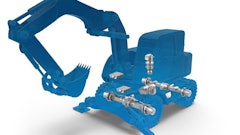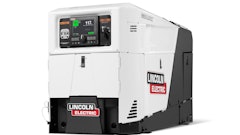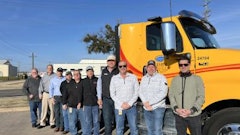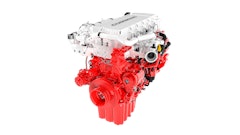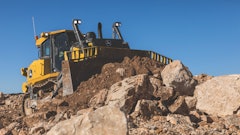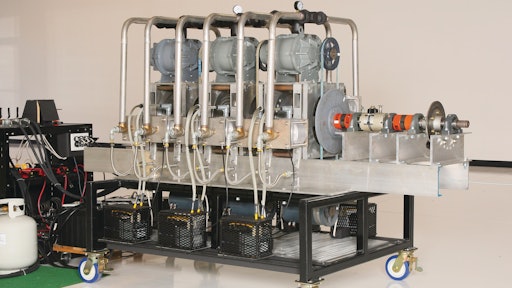
An engine with only one moving part… On average uses about a 1/3 less fuel to produce the same amount of horsepower as a traditional engine... Complete burn of fuel (over 99%) reducing emissions… And, on top of everything else, the engine can run on any fuel that can be gasified…
Sound too good to be true? Tell that to TTEngines (TTE, also known as Turbine Truck Engines, Inc.) of DeLand, FL. TTE is a developmental stage company that owns an exclusive license to develop and re-license its patented Detonation Cycle Gas Turbine (DCGT) engine, which is in the late stages of prototype development. The DCGT engine will work for any shaft-driven application, not just the trucking industry as the company name implies.
“When I saw the technology, I said, ‘Why didn’t I think of this?’” says Michael Rouse, president and CEO of TTE. “The scientist who invented the engine, Robert Scragg, had worked on this technology for over twenty years. The unique thing about the process is that it is pulse detonation; we are exploding the fuel air mixture in cyclic detonations, which means there is a pause between each detonation. Typically, a regular gas turbine engine uses a continuous flame.”
The engine
The engine has only one moving part. “Typically a diesel would have 50-60 moving parts,” states Michael Patterson Chief Information Officer at TTE. The DCGT has no pistons or valves and uses no lube oil, filters or pumps. With fewer moving parts, the engine costs less to build and less to maintain. It also operates under low pressure, reducing the number of stressors on the parts and contributing to the engine’s longevity.
The DCGT is powered by an innovative new electromagnetic isothermal combustion process that produces complete combustion of fuel-oxidizer mixtures in cyclic detonations. “In the combustion chamber, there is over 99% fuel burn, which reduces the harmful emissions that come out of the tailpipe,” says Patterson.
At the heart of the engine is the turbine wheel which consists of a series of blades installed on a disk attached to the main drive shaft. Two staggered, valve-less combustion chambers – located on opposite sides of the rotor – direct the high-energy detonation gases onto the turbine blades. The high-pressure gases produced by these detonations cause the turbine to spin, and low energy gas is discharged from the turbine assembly via the exhaust outlets.
The engine’s unique combustion process allows the DCGT to operate with blower air at low static pressure, negating the necessity of compressing and preheating fuel-oxidizer mixtures prior to combustion and allowing higher thermal efficiency in a simplified mechanical structure.
According to TTE’s website (www.ttengines.com), “The combustion chambers are connected by a common valve-less manifold fed with fuel and oxidizer. When combustible gases are detonated by an igniter in one of the combustion chambers, the back pressure from the detonation shuts off the fuel and oxidizer flow to that chamber and redirects the fuel and oxidizer to the opposite chamber, where detonation occurs. The process repeats cyclically. Power is thus taken off the rotor shaft mechanically or electrically.”
This cyclic detonation discontinues the use of fuel, leading to significant fuel savings and increased efficiency. It also provides intermittent high-temperature events during detonation which leads to an overall reduction in equilibrium temperature for longer part life.
Fuel flexibility
A huge component of the engine technology is its fuel capabilities. “The engine is truly flex fuel capable. It will run on gasoline, but it will also run on hydrogen. It will run on diesel, but it will also run on natural gas. It will run on ethanol, but it will also run on propane. Any fuel that can be gasified will work on the engine,” Patterson says. “And the engine doesn’t have to be evacuated of one fuel for another fuel to start working in the engine.
“Everybody knows that hydrogen would be a great way to propel vehicles down the road, the problem is how do you gather it, package it, distribute it and load it on to a vehicle? There are places where you can buy hydrogen as a fuel, but they are few and far between. What this means for this engine is that we could start using it with the fuels that are readily available today, but as other fuels come online, the engine can migrate from one fuel to another without having to be modified,” he says.
“The ignition system is unique in that the spark plug is actually a plasma injector, and it delivers a continuous visual arc into the detonation chambers,” explains Rouse. “Any fuel/air mixture that comes into the chamber detonates automatically or simultaneously to produce a complete combustion of the fuel/air mixture in less than a millisecond. Then the high pressure that is produced when you have that huge explosion creates a shockwave that is directed to the turbine, and then that is followed by a fast flame front that expands over the turbine blades which creates even more power.”
“Today the prototypes that we have are feasibility prototypes, and we are using gaseous type fuels that easily combust. But any type of fuel that we gasify prior to putting into the detonation chamber will be detonated, or any mixture of fuels. We are even talking to a company now that is looking at using powdered coal to produce power,” says Rouse.
TTE has always had its focus on environmental issues and continues to focus how this engine can impact those issues by helping to reduce emissions while also reducing fuel use.







